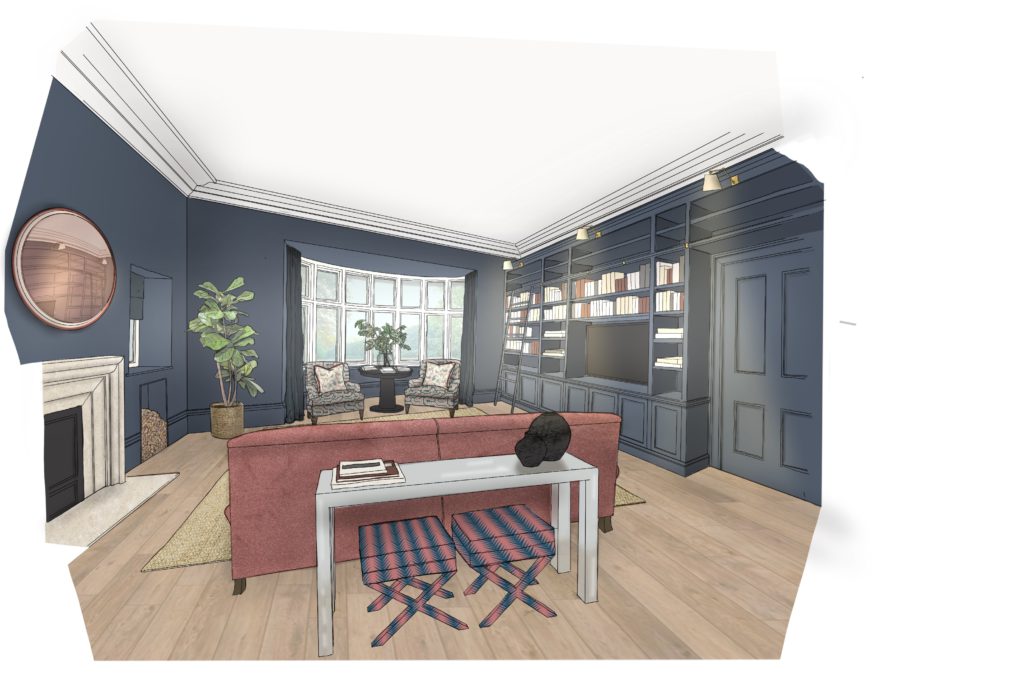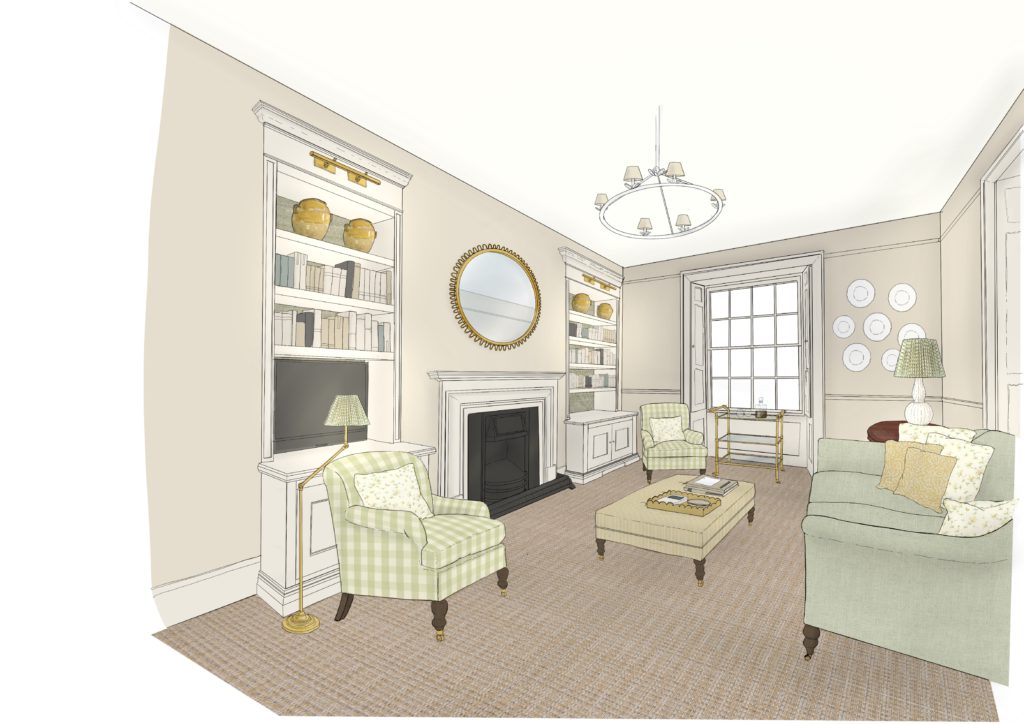Choosing Colour Schemes
How colours work best in interior designs...
Picking a bold statement colour and painting the entire room in it, or wallpapering the entire room on a bold print is my favourite way to allow for the pieces you love to stand out and take centre stage. In my opinion, a successful room should have many things that the eye dances upon and no one feature should jump out at you. There’s no maximum number of colours you are allowed in one space, although I work with my clients to create stunning schemes with prints, patterns and colours that complement each other. In juxtaposition to this, having a neutral wall can also really help your colour scheme to stand out. Picking a tonal paint or wallpaper to sink into the background can create the canvas for a jewel toned sofa or an exquisite piece of vintage art to shine. I’ve also created schemes with clients where we use all of the same colour in one room, just in differing tones, to create a vibrant space that they loved. The world really is your oyster when it comes to colour - once we’ve found a jumping off point together, there’s no stopping us!
What to consider practically
When choosing a colour scheme, practical elements definitely need to be considered. If your room is north facing and gets minimal natural light, painting it a warm tone might feel more welcoming, whereas a room with all day sunshine or a door to the garden could be your chance to go bold, bright and beautiful. Seeing colours on swatches, or even painted on the wall can help you to visualise what will work best in your home. A colour scheme usually tells a story through your home, and works in harmony with the items and people who inhabit it.
How to start planning
There are a myriad of ways to start planning, but my absolute favourite is to start pulling out fabrics and see what speaks to me, my team and my clients. Curating a colour scheme from there flows naturally and that’s how we start to build our design. We would then start to build a concept with a mood board to show the design direction, but this can adapt and change until the client is happy with the overall feel of the space.
Picking a bold statement colour and painting the entire room in it, or wallpapering the entire room on a bold print is my favourite way to allow for the pieces you love to stand out and take centre stage. In my opinion, a successful room should have many things that the eye dances upon and no one feature should jump out at you. There’s no maximum number of colours you are allowed in one space, although I work with my clients to create stunning schemes with prints, patterns and colours that complement each other. In juxtaposition to this, having a neutral wall can also really help your colour scheme to stand out. Picking a tonal paint or wallpaper to sink into the background can create the canvas for a jewel toned sofa or an exquisite piece of vintage art to shine. I’ve also created schemes with clients where we use all of the same colour in one room, just in differing tones, to create a vibrant space that they loved. The world really is your oyster when it comes to colour - once we’ve found a jumping off point together, there’s no stopping us!
What to consider practically
When choosing a colour scheme, practical elements definitely need to be considered. If your room is north facing and gets minimal natural light, painting it a warm tone might feel more welcoming, whereas a room with all day sunshine or a door to the garden could be your chance to go bold, bright and beautiful. Seeing colours on swatches, or even painted on the wall can help you to visualise what will work best in your home. A colour scheme usually tells a story through your home, and works in harmony with the items and people who inhabit it.
How to start planning
There are a myriad of ways to start planning, but my absolute favourite is to start pulling out fabrics and see what speaks to me, my team and my clients. Curating a colour scheme from there flows naturally and that’s how we start to build our design. We would then start to build a concept with a mood board to show the design direction, but this can adapt and change until the client is happy with the overall feel of the space.


